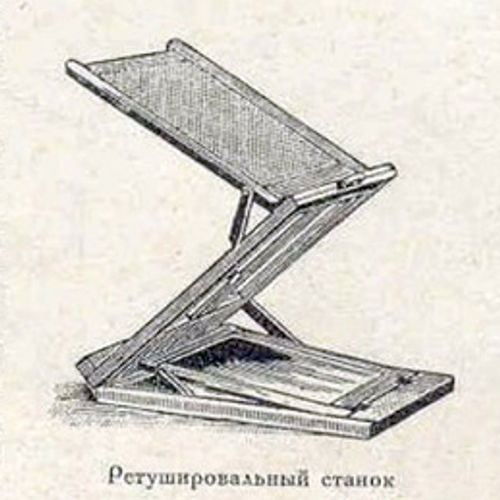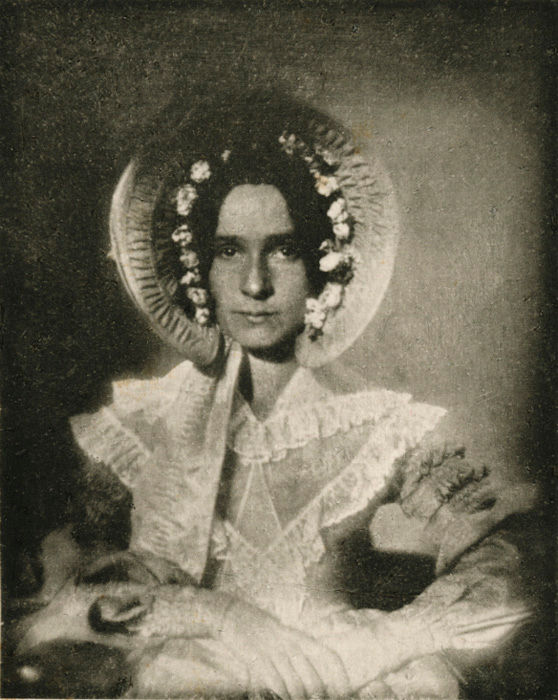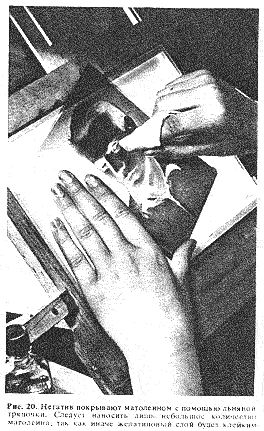
| Added | Wed, 02/11/2016 |
| Источники | журнал "Советское фото" №5, 1927 г
Brewster D. The Stereoscope: Its History, Theory and Construction. – London: John Murray, Albemarle Street, 1856.
|
| Версии |
In the study of unexplained facts is often necessary to deal with photos submitted as material evidence. To be able to rely on these images as evidence of the existence of an unexplained phenomenon, it is necessary to consider not only the specifics of the process of photographing, materials used, and the probable defects of shooting, but intentional impact on the resulting image from the photographer. Photo editing is commonly used to correct defects, prepare for publication, solving creative problems, but also used for intentional falsification of photos with the aim of obtaining certain benefits.
In this article we will consider the image editing options and ways to implement them that existed in the pre-digital era.
The first technically developed and gained mass distribution method of photography was invented by the French artist Louis Jacques Mande Daguerre in 1839 and was called "daguerrotype". Its essence consisted in the following: silver-coated copper plate was carefully polished, and then treated with iodine vapor, with the result that it formed a thin layer of light-sensitive silver iodide. Then the plate was placed in the dark in the camera obscura and opened the lens for 15-30 minutes. On the photosensitive layer exposed to sunlight had a hidden image. Further to developing, the plate was treated with mercury vapor, and then with sodium thiosulphate to fix the image, and carefully washed. The result of all these actions on the record there is a photo-positive. First retouch of such positive and attributed to the photographer and engraver on copper Isenring already in 1841. To add luster to the eyes and to emphasize the reflections on the jewels, he scraped the silver coating on the daguerreotype to the copper substrate.
Dagerotipii. The earliest photograph, taken by John Draper, in 1840
The following photographic process that came to replace dagerotipii, was the first in the history of the negative-positive process that allows you to replicate the positives from the original negative image on paper, and called calotype. It is based on the use of paper impregnated with silver iodide. At this stage, the opportunities for retouching greatly increased, image processing is carried out with the help of special chemicals, optical devices, etc., and the retouching has become divided into negative (in which drew paints on the negative) and positive (has already ruled the snapshot).
Retouching negatives
Retouching images was performed manually by drawing with pencils or special paints, scraping individual sections or chemical treatment (by etching the emulsion of the photographic layer). Sharpness increased technology classical Unsharp masking.
Technical retouching was used to eliminate spurious characteristic for chemical pictures of defects (points, spots, scratches, etc.) and gradation of density of the strengthening or weakening of individual sections of a grayscale image (with the selection of the contrast of printing as well as using masks).
Structural retouching was also done by hand — cut out the negatives of the parts you need and cut them together (or glue the finished pictures), retake or reprinted pictures change the exposure using filters.
Already in 1879 appeared the airbrush, which immediately gained popularity among retouchers. With its help it was possible to very carefully apply paint to the positives, adjusting not only the width of the stroke, but also its transparency, and feathering the edges. Appeared the possibility to increase or decrease the contrast of the image.
Further methods of photographing improved. In 1887, Gabriel Lippmann invented the "method of photographic color reproduction based on interference", and in the early twentieth century, photography had already made the first steps in the digital era. However, the basic principles of retouching in the midst of those years are used to this day with special programs!.
Next, we consider manipulation in image processing. The information below will relate primarily action used in fake photos to "prove" the existence of NOF.
Cropping, removal of unwanted details, change of composition
Part of the frame is truncated to distort the submitted image or hide details that shed light on the true nature of the object.
Photo montage (creating from parts of multiple images new images)
Multiple exposure possible both in the photo where the photograph combines images from different negatives or their required parts. Classic film photography multiple exposure is feasible also in case of multiple actuation of the shutter and fixed photographic material.
Eugène Thibault. The show is a French illusionist Henri Robin, 1863
The most famous photographer who used this technique to "photographing" of the paranormal, was William Mamler (William Mumler). He used collages to show the presence of ghosts of dead people next to their grieving relatives. Now, many of his photographs are given a direct proof of the existence of ghosts.
To poetrycom may also include such a technique as double exposure using a black background, when the first pictures close black background part of the image, and then, closing the other part of the image, make another photo or series of photos.
Also sir David Brewster in his book "Viewers: History, theory, device," gave step-by-step instructions on how to make a photo with ghosts:
For the purpose of amusement, the photographer might carry us even into the regions of the supernatural. His art, as I have elsewhere shewn, enables him to give a spiritual appearance to one or more of his figures, and to exhibit them as "thin air" amid the solid realities of the stereoscopic picture. While a party is engaged with their whist or their gossip, a female figure appears in the midst of them with all the attributes of the supernatural. Her form is transparent, every object or person beyond her being seen in shadowy but distinct outline. She may occupy more than one place in the scene, and different portions of the group might be made to gaze upon one or other of the visions before them. In order to produce such a scene, the parties which are to compose the group must have their portraits nearly finished in the binocular camera, in the attitude which they may be supposed to take, and with the expression which they may be supposed to assume, if the vision were real. When the party have nearly sat the proper length of time, the female figure, suit ably attired, walks quickly into the place assigned her, and after standing a few seconds in the proper attitude, retires quickly, or takes as quickly a second or even a third place in the picture if it is required, in each of which she remains a few seconds, so that her picture in these different positions may be taken with sufficient distinctness in the negative photograph. If this operation has been well performed, all the objects immediately behind the female figure, having been, previous to her introduction impressed upon the negative surface, will be seen through her, and she will have the appearance of an aerial personage, unlike the other figures in the picture. This experiment may be varied in many ways. One body may be placed within another, a chicken, for example, within an egg, and singular effects produced by combining plane pictures with solid bodies in the arrangement of the persons and things placed before the binocular camera. Any individual in a group may appear more than once in the same picture, either in two or more characters, and no difficulty will be experienced by the ingenious photographer giving in to these double or triple portraits, when it is required, the same appearance as that of the other parties who have not changed their place. In groups of this kind curious effects might be produced by placing a second binocular slide slide between the principal and the eye, and giving it a motion within the stereoscope. The figures upon it must be delineated photographically upon a plate of glass, through which the principal figures on the slide are seen, and the secondary slide must be so close to the other that the figures on both may be distinctly visible, if distinct vision is required for those which are to move.
Another method of making solid figures transparent in a photograph has been referred to in the preceding chapter, and may be employed in producing amusing combinations. The transparency is, in this case, produced by using a large lens, the margin of which receives the rays which issue from bodies, or parts of bodies, situated behind other bodies, or parts of bodies, whose images are given in the photograph. The body thus rendered transparent must be less in superficial extent than the lens, and the body seen through it must be so far behind it that rays emanating from it would fall upon some part of the lens, the luminosity of this body on the photo graph being proportional to the part of the surface of the lens upon which the rays fall. This will be readily under stood from Figs. 48 and 49, and their description, and the ingenious photographer will have no difficulty in producing very curious effects from this property of large object-glasses.
This method allowed to get in the pictures translucent figure among the usual us solids. the Survey was conducted a long exposure, and the figure walked in only a few seconds when the rest of the stationary objects.
In this way it is possible not only to add new object into the frame, and remove junk.
All of the new images are not only trying to equalize the brightness and contrast, but also to observe the proportions and the physics of object interaction. Often, on the resulting collage is additionally applied various special effects, filters, shadows, backgrounds, textures, shading and highlighting to give the image of integrity and uniformity. Although the use of these methods was sometimes enough for the untouched photo montage image.
Drawing
With pencils, paints and ink, you can complement the frame with all necessary elements. The possibility of recognition of the true nature of such objects depends on the talent of the Retoucher as an artist, as well as volume of execution. This technique can be used independently, but also complement the photo montage.
When retouching you can use simpler techniques, such as changing the brightness and/or contrast of the image, creating a wrong color tone of the image, as well as defocusing the entire image or its part. Such manipulation even familiar objects can be thought of as something unexplained, because the descent is difficult to determine the true nature of the object.
Thus, the retouching of photos used for a long time. Most often treatment do people with years of experience, and even artists (a vivid example - Ivan Nikolaevich Kramskoy), and a professional approach to business difficult to determine the authenticity of the picture. However, the ability to distinguish a real photo from a fake allows the complexity of the playback of the above-described methods, as well as their shortcomings.
Translated by «Yandex.Translator»
Errol Morris said, "It probably took no more than ten minutes from the invention of photography to the moment when people realized that photographs could be used to deceive." The first technically developed and widely used method of photography was invented by the French artist Louis Jacques Mande Daguerre in 1839 and was called "daguerreotype". The first retouching of such a positive is attributed to the photographer and copper engraver Isenring already in 1841.
Multiple exposures are possible both with photo printing, where images from different negatives or their necessary parts are combined on one photograph, and with multiple shutter actuation and stationary photographic material. The most famous photographer who used this technique to "photograph" paranormal phenomena was William Mumler. He used photo collages to show the presence of the ghosts of deceased people next to their grieving relatives. Now many of his photographs are given out as direct proof of the existence of ghosts.
Log in or register to post comments




